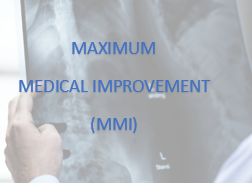Stephen Farrar v. Tate & Lyle Americas, Inc.– Where medical records supported finding that more likely than not Farrar had not attained maximum medical improvement (MMI), any error by the ALJ by failing to consider if Farrar met burden of production that permanent impairment (PI) exceeds threshold is harmless as the finding of no MMI is sufficient for Farrar to exceed burden of production. In Farrar v. Tate & Lyle Americas, Inc. , Me. W.C.B. Dec. No. 23-17 (App. Div. 2023), Farrar suffered a 12/10/12 work related right ankle injury which resulted in several surgeries. Tate & Lyle paid lost time benefits since the injury. Because this date of injury was subject to the durational limit on partial benefits under 39-A M.R.S.A. 213, Tate & Lyle filed a Petition to Determine Permanent Impairment and a Petition to Terminate Benefits.
After hearing, the ALJ denied the employer’s petitions on the grounds that Farrar had not attained MMI. On appeal Tate & Lyle argued it was reversable error for the ALJ to implicitly determine that Farrar met his burden of production under Farris v. Georgia-Pacific Corp., 2004 ME 14. In Farris, the Law Court held that while the employer bears the ultimate burden of proof on establishing the durational limit on a Petition to Terminate Benefits, the employee bears the initial burden of raising the issue of whole body impairment and producing evidence to demonstrate a genuine issue of whether PI exceeds the applicable threshold. The burden of proof then shifts to the employer.
The Appellate panel recognized that the Law Court and the Appellate Division has not held that where Farris applies, MMI is a threshold issue with the burden of proof to the employer that would obviate the need for the employee’s burden of production. The panel concluded it not decide that issue in order to determine whether the ALJ committed error. Because the records of Drs. Pomeroy and Flanigan provided a sufficient basis for a finding Farrar had not reached MMI, such finding would be based on a higher standard of proof than would be required to meet the burden of production. Any error to address whether Farrar met his burden of production under Farris is harmless because the ALJ determined the finding of no MMI was dispositive of the employer petitions. Finally, in reaching the determination that Farrar had not attained MMI, the ALJ was entitled to choose among conflicting medical opinions and resolve any inconsistencies within.
To view this decision, click here.
If you have any questions about this case or any other workers’ compensation matter, please let us know.

